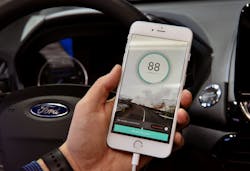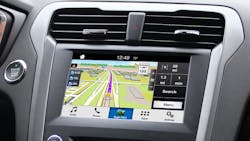Connected trucking and connected living: Rewards and risks
I’m sure many fleets and truck drivers are quite tired of hearing about all the potential improvements that can be gained through “connected trucking” and “connected living” for that matter, to use two phrases now currently in vogue.
The reason is largely one of overload: so many “connected truck” and “connected truck driver” offerings are being rolled out that it’s becoming difficult to keep track of them all – not to mention all the software and systems (plus various technological gadgets) that inevitably are tied to those offerings.
Just look at what’s going on in the automotive world, for starters.
As I noted yesterday, there’s a new “consortium” being established by Ford Motor Co. and Toyota Motor Co. to help “standardize” a lot of these “connected interfaces” being added to vehicles these days.
Ford alone is ramping up the “connectivity” available via its vehicles as well; it recently unveiled a bevy of new services through its SYNC AppLink system that’ll allow you to pay for gas without leaving the car, project a navigation map from your smart phone to an in-car touch screen, while offering to integrate a new app that can help lower insurance rates by recording your driving habits.
Whew!
Here are some details:
Mobile payments: Ford and ExxonMobil are introducing a new e-commerce app that links ExxonMobil’s Speedpass+ (an automated payment system) through Ford’s SYNC 3 system so drivers can use voice commands to search locate participating ExxonMobil refueling stations and pay for fuel without leaving the car.Hey now, all of that sounds very cool. And according to a new study by consulting firm Assurant, consumers in the main are “excited” by all of this progression toward “connected living” and the many ways connected technologies can improve their lives.
However, that study – entitled The Connected Future: Navigating Promise and Risk – also highlighted a number of growing concerns about the risks that can accompany connected lifestyles as well.
Some 68% of the 2,500 respondents in Assurant’s survey believe web-connected homInterestingly, the study also found a correlation between happiness and a more connected lifestyle as those polled with the highest average ownership of connected products have a 20% greater sense of wellbeing than people who have the least average ownership.
Yet, despite all of those glorious connected lifestyle benefits, Assurant’s survey indicated that 65% of respondents said they were either “terrified” or “very concerned” about identity theft, with 62% expressing similar concerns regarding cyberattacks.
Privacy issues generated somewhat lower but still significant fear, with 42% “terrified” or “very concerned” about foreign government eavesdropping, and 40% with the same reaction about similar activities by the U.S. government.
“When it comes to connected technology, consumers want to get the most out of their products with the least anxiety,” noted Keith Demmings, president of global lifestyle at Assurant, in a statement.
“It’s clear that consumers who are most comfortable with technology are much more likely to protect themselves and their purchases with additional coverage,” he said. “In turn, they experience half the level of fear and frustration associated with a connected lifestyle.”Indeed, a strong majority (79%) of those polled by the consulting firm said they were more likely to buy products that increase protection against privacy risks, with technophiles twice as likely to address this concern by buying extra protective services rather than abandoning their devices.
According to Assurant, this helps explain why, across 21 internet-connected products, an average of 45.2% of respondents who are considering purchases of one or more products in 2017 indicated that offering a two-year extended warranty or an insurance policy covering theft, loss or damage will increased their likelihood of buying so-called “web-connected” goods.
Now, all of those concerns are related to home-related items, not necessarily vehicle-related systems. Still, the concern is there, for hacking items such as teakettles is not at all dissimilar from hacking truck systems, as this story explains.
Something to keep in mind as trucking will only continue to become more and more connected over time in a multitude of ways.



